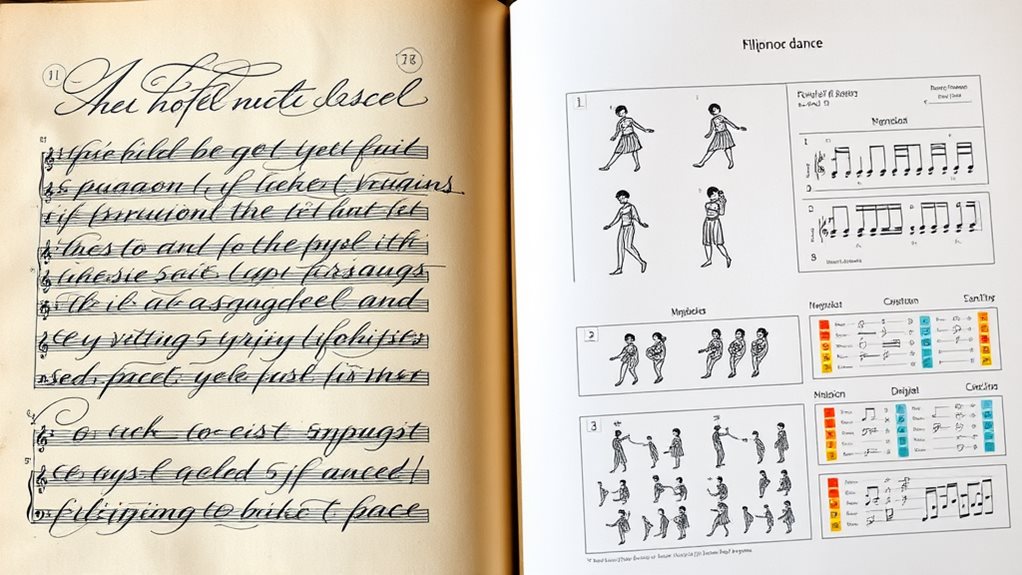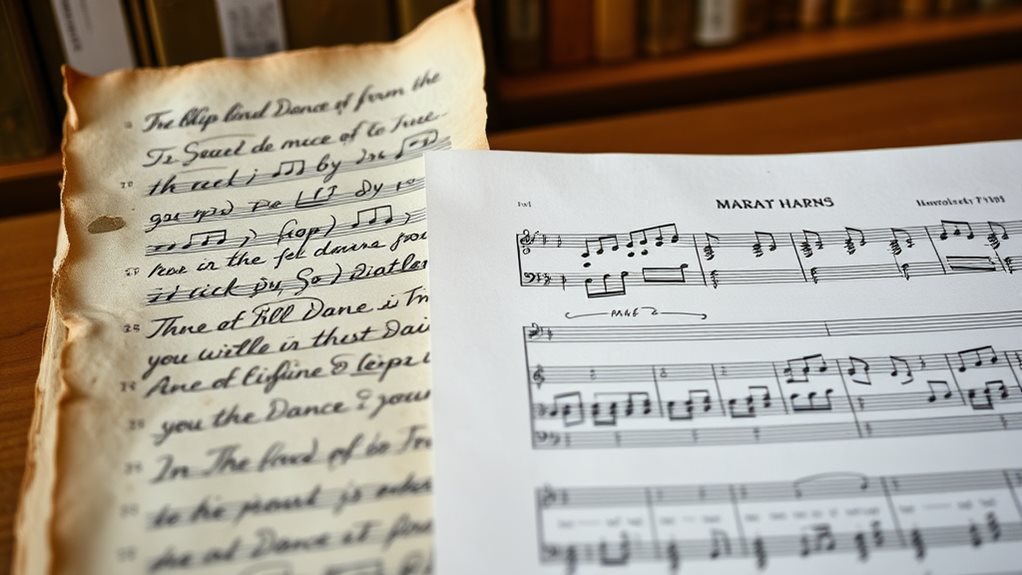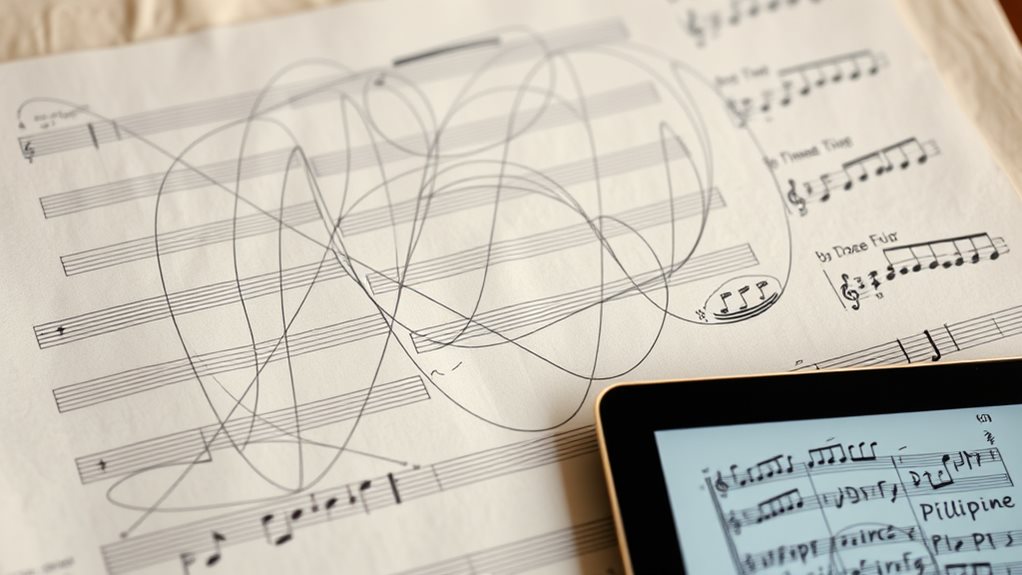Early Filipino dance lacked standardized notation**. Traditional methods relied on oral transmission** and observation, making it difficult to document and preserve dances. This approach was limited, as it relied on the memory and skills of the dancers and instructors.
Modern notation systems offer more precise documentation. Labanotation and Benesh are two examples of modern systems that provide a more detailed and accurate way of recording dance movements. However, adapting these systems to Filipino dance styles presents unique challenges, such as capturing the nuances of indigenous and colonial influences.
Aquino's system provides a valuable framework. Specifically, it is well-suited for indigenous dances, offering a more comprehensive approach to documenting and preserving these traditional dances.
The future of dance notation involves digital tools and collaborations. Integrating digital tools and collaborations will enable the creation of a comprehensive archive, providing a more efficient and effective way of documenting, preserving, and sharing Filipino dances.
A History of Filipino Dance

Filipino dance is a rich tapestry of cultural influences, reflecting the country's complex history. From its pre-colonial roots to its modern manifestations, Filipino dance has been shaped by various cultural traditions.
Indigenous movements played a significant role in pre-colonial life. These dances served spiritual, celebratory, and narrative purposes. For example, the Dugso, Sohten, and Lawin-Lawin dances, preserved by groups like the Higaonon, showcased cultural storytelling through mimicry and ritual.
The Binalayan dance, which vividly portrays a hen, chicks, and hawk, demonstrates the power of indigenous movements in recreating nature.
The arrival of Muslim traders in the 14th century introduced new influences. The Singkil, a Maranao dance, exemplifies this, narrating a princess's escape from an earthquake through graceful movements. This dance reveals how cultural storytelling blended Islamic narratives with local customs.
Similarly, the Yakan's Pangsak, with its intricate footwork, showcases the fusion of traditions.
Spanish colonization further blended cultural influences. Dances like Maglalatik, a mock war between Moro and Christian dancers, reflect the syncretism of colonial times. The Maria Clara dances, incorporating Spanish court style, demonstrated the adaptation and evolution of indigenous movements.
Modern Filipino dance continues to thrive. Ancient dances are performed in vibrant costumes at festivals, preserving cultural storytelling. The Tinikling, a popular example, has even entered the international arena.
While the preservation of tribal dances continues, modern iterations reflect a constant evolution, demonstrating the enduring power of Filipino dance.
Systems of Dance Notation
Dance notation systems are essential for preserving and analyzing dance movements. They allow for detailed documentation and reconstruction of movements, which is crucial for movement analysis. These systems range from general methods applicable across dance styles to those specific to a particular genre.
Labanotation uses symbols for direction and quality, while Benesh employs a musical stave to represent body parts. Eshkol-Wachman focuses on body coordinates, and the older Beauchamp-Feuillet system is primarily used for Baroque dance. The now-obsolete Stepanov system is significant for its role in documenting Imperial Russian Ballet.
Specific dance notation systems cater to unique needs. Kahnotation is used for tap, Tango Notation for Argentine tango, Chamo's system for Korean dance, and Sutton DanceWriting is applicable across several forms. Early computerized systems, like DOM, represent a technological leap.
The following table summarizes some of the general and specific dance notation systems:
| General Systems | Specific Systems |
|---|---|
| Labanotation | Kahnotation |
| Benesh Movement Notation | Tango Notation |
| Eshkol-Wachman Movement Notation | Chamo System of Dance Notation |
| Beauchamp–Feuillet Notation | Sutton DanceWriting |
| Stepanov System | DOM (Dance on Microprocessor) |
These notation systems offer diverse approaches to movement analysis, each with strengths and limitations depending on the dance style, level of detail required, and technological resources available. Applications extend beyond mere documentation and include choreography reconstruction, copyright protection, and education. The evolution of these systems reflects dance's own dynamic nature.
Safeguarding Cultural Heritage

Safeguarding Cultural Heritage through Dance Documentation****
The Philippines' rich cultural heritage is reflected in its diverse folk dances, which require multifaceted strategies for preservation. Six volumes of dance documentation using Francisca Reyes Aquino's system**** have been published, detailing dances from various regions and incorporating indigenous dance terms to highlight their importance.
Preserving Indigenous Recognition****
To promote indigenous recognition, the documentation categorizes dances into "Dances of Non-Christian Filipinos" and "Dances of Christian and Lowland Filipinos," showcasing the nation's diverse heritage.
Dance portrays the local narrative, reifying cultural identities and maintaining heritage despite external influences.
Research Methods
National workshops, interviews, and observations contribute to the research, with university faculty from music conservatories and physical education departments assisting in documentation.
Community engagement is vital, with community members participating in documenting their traditions and collecting money during performances like the Pantomina.
Cultural Preservation through Adaptation
Dances are adapted while respecting their core meanings, as seen in the Cariñosa and Pandanggo sa Ilaw.
This nuanced approach to cultural preservation ensures the dances' continued relevance.
Groups like the Bayanihan showcase dances nationally and internationally, further promoting cultural heritage.
Diverse Forms of Dance
The Philippines is home to a diverse array of traditional dances, reflecting its rich cultural heritage and historical influences.
The country's folk dances are a testament to its complex history, with each style carrying unique stories and traditions. For instance, the Cariñosa is a Spanish-influenced courtship dance characterized by its grace and elegance, while the Pandanggo sa Ilaw is a vibrant dance performed with oil lamps balanced precariously on the head and hands.
Regional variations in dance styles are striking. In the southern region of Mindanao, the Kappa Malong-Malong is a traditional Maranao dance that celebrates the malong garment, whereas the Singkil is a visually stunning dance characterized by its intricate movements and bamboo poles.
The indigenous traditions of the Higaonon and Kalinga peoples are also well-documented, with their dances meticulously notated to preserve their unique steps and cultural significance.
Filipino dance is a blend of indigenous and Western influences. The Pantomina, a wedding dance with pantomime elements, showcases this fusion of styles. In contrast, Hispanized and Christianized dances, such as the Rigodon and Cuadrilla, reflect lowland Filipino traditions and demonstrate the interplay between historical contexts and cultural expressions.
Future of Dance Documentation

Filipino dance documentation requires embracing digital advancements to preserve its vibrancy and complexity.
Digital notation software is revolutionizing the way dance movements are created, edited, and animated. For instance, sophisticated software integrates motion capture for unparalleled precision, allowing choreographers to refine their craft.
Online platforms offer collaborative tools, fostering global connections among choreographers and dancers. This shared digital archive will be accessible worldwide, preserving cultural heritage.
Virtual and augmented reality (VR/AR) presents groundbreaking opportunities for dance documentation.
Virtual dance studios enable remote learning and practice, fostering international collaborations. 3D models in VR/AR enhance visualization, providing a clearer understanding of complex movements.
Interactive feedback mechanisms within VR/AR refine technique, resulting in more accurate and nuanced notations. Digital libraries and searchable databases will categorize dance styles, notations, and relevant historical contexts.
Education will undergo a significant transformation.
Dance notation will be integrated into curricula alongside interactive learning tools, making it more accessible.
Training programs for notation specialists and online courses will ensure a skilled workforce capable of utilizing digital advancements.
Collaborative tools, such as online forums and shared document platforms, will facilitate international collaborations on projects, simplifying the process of documenting various forms of Filipino dance.
The future of dance documentation is about creating a living, evolving archive—a testament to Filipino dance's dynamic spirit.
Questions and Answers
Who Invented the Most Common System?
Francisca Reyes Aquino developed the most common system of Philippine dance. This system is a cornerstone of Philippine dance's historical development and cultural significance, impacting its preservation and education.
Are There Online Dance Notation Resources?
Online dance notation resources are available. These resources include digital archives, notation software, online tutorials, and community forums dedicated to dance notation. For instance, the Dance Notation Bureau provides an online archive of dance scores and publications. LabanWriter and DanceForms are examples of notation software that allow users to create and edit dance scores. Online tutorials, such as those found on YouTube, offer step-by-step instructions on how to use notation systems like Labanotation. Additionally, community forums, such as DanceNotation.org, provide a space for users to ask questions, share knowledge, and discuss dance notation.
How Accurate Is Dance Notation, Really?
Dance notation's historical accuracy varies. The accuracy of dance notation depends on the notation system used. Older systems lack detail, making it difficult to accurately recreate a dance. For example, the Feuillet notation system, developed in the 17th century, only indicates the movement of the feet and legs, leaving out important details about arm and hand movements.
Modern notation systems offer greater anatomical accuracy. These systems, such as Labanotation and Benesh Movement Notation, provide more detailed descriptions of body movements, including the position and orientation of body parts. They can't capture nuances of performance, however, such as the dancer's expression, energy, and style.
Is It Costly to Learn Dance Notation?
The cost of learning dance notation depends on various factors.
Learning resources play a significant role in determining the cost. For instance, using specialized software like DanceForms or LifeForms can be expensive, with prices ranging from $200 to $500. On the other hand, online tutorials and YouTube videos can be free or low-cost.
Additionally, tuition fees for dance notation classes vary depending on the instructor, location, and duration of the course. Private lessons can cost between $30 to $100 per hour, while group classes may range from $10 to $50 per session.
Before committing to learn dance notation, it is essential to consider your budget and available learning resources to make an informed decision.
Can Anyone Learn Dance Notation Easily?
Mastering dance notation requires effort and dedication. The accessibility of dance notation systems for beginners varies greatly, depending on the chosen learning method. For instance, the Labanotation system uses abstract symbols to represent movement, making it challenging to learn for those without prior dance experience. On the other hand, the Benesh Movement Notation system is more visual, using stick figures to illustrate movement, which might be more accessible to beginners with a background in dance or visual arts. Dedicated study and practice are essential to overcome the unique complexities of each system.